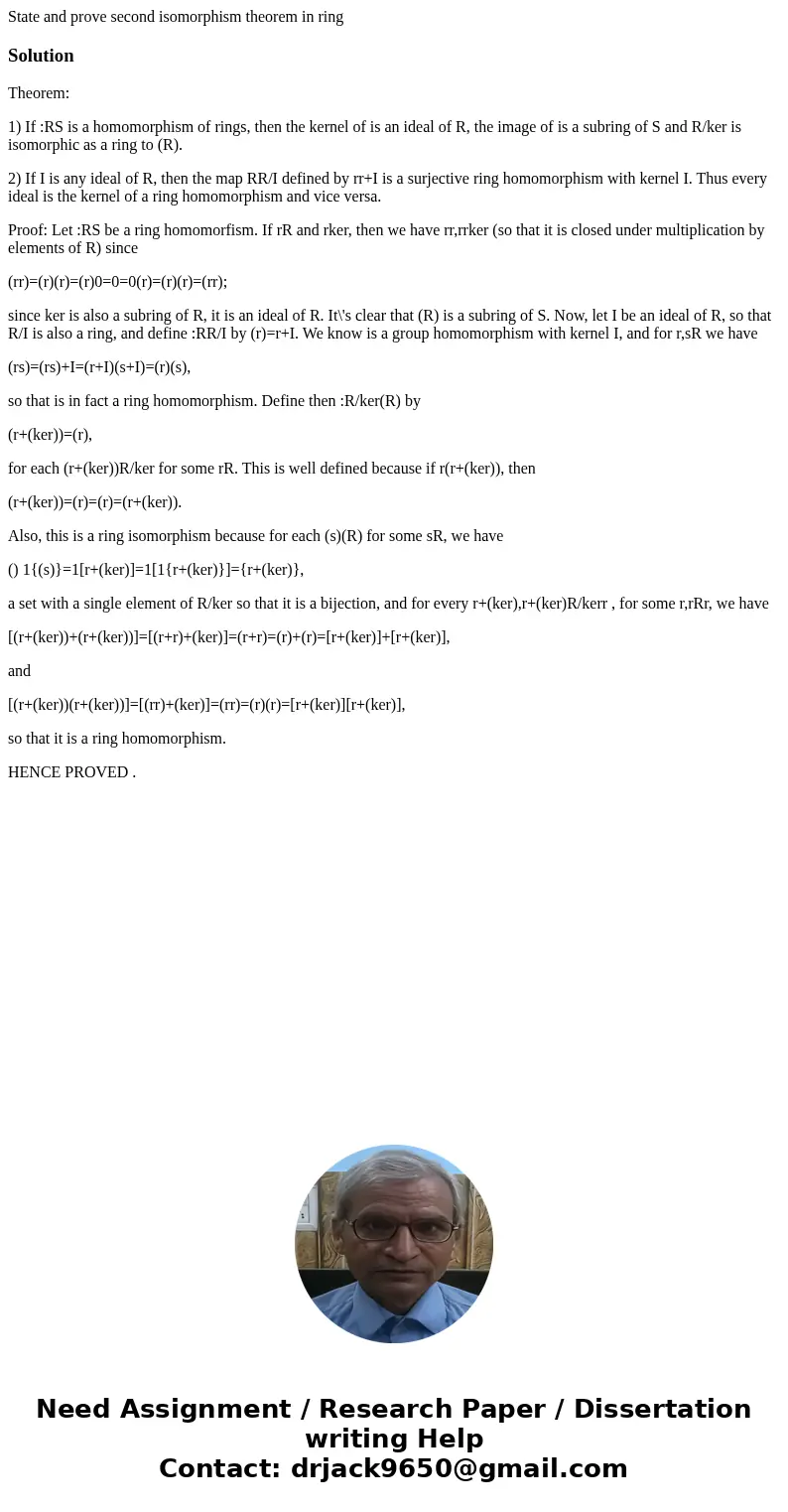State and prove second isomorphism theorem in ring SolutionT
Solution
Theorem:
1) If :RS is a homomorphism of rings, then the kernel of is an ideal of R, the image of is a subring of S and R/ker is isomorphic as a ring to (R).
2) If I is any ideal of R, then the map RR/I defined by rr+I is a surjective ring homomorphism with kernel I. Thus every ideal is the kernel of a ring homomorphism and vice versa.
Proof: Let :RS be a ring homomorfism. If rR and rker, then we have rr,rrker (so that it is closed under multiplication by elements of R) since
(rr)=(r)(r)=(r)0=0=0(r)=(r)(r)=(rr);
since ker is also a subring of R, it is an ideal of R. It\'s clear that (R) is a subring of S. Now, let I be an ideal of R, so that R/I is also a ring, and define :RR/I by (r)=r+I. We know is a group homomorphism with kernel I, and for r,sR we have
(rs)=(rs)+I=(r+I)(s+I)=(r)(s),
so that is in fact a ring homomorphism. Define then :R/ker(R) by
(r+(ker))=(r),
for each (r+(ker))R/ker for some rR. This is well defined because if r(r+(ker)), then
(r+(ker))=(r)=(r)=(r+(ker)).
Also, this is a ring isomorphism because for each (s)(R) for some sR, we have
() 1{(s)}=1[r+(ker)]=1[1{r+(ker)}]={r+(ker)},
a set with a single element of R/ker so that it is a bijection, and for every r+(ker),r+(ker)R/kerr , for some r,rRr, we have
[(r+(ker))+(r+(ker))]=[(r+r)+(ker)]=(r+r)=(r)+(r)=[r+(ker)]+[r+(ker)],
and
[(r+(ker))(r+(ker))]=[(rr)+(ker)]=(rr)=(r)(r)=[r+(ker)][r+(ker)],
so that it is a ring homomorphism.
HENCE PROVED .

 Homework Sourse
Homework Sourse